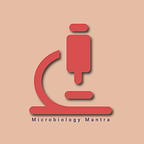Cleanroom Design Elements to Prevent Microbes in Pharmaceutical Manufacturing Facilities
Cleanrooms are specialized environments crucial for industries such as pharmaceutical manufacturing, where maintaining a sterile workspace is important to ensure product quality and safety. These controlled environments employ a combination of meticulously designed features and stringent protocols to prevent contamination by microbes and non-viable particles. From sophisticated air filtration and HVAC systems to meticulous gowning procedures for personnel, every aspect of cleanroom design and operation is geared towards minimizing the presence of contaminants. In this context, a thorough understanding of the key elements of cleanroom design becomes essential. This article explores in detail the fundamental elements involved in creating and maintaining cleanroom environments.
Here are some key elements of cleanroom design:
- Air Filtration and HVAC Systems: Cleanrooms have sophisticated systems to ensure the air inside is free from tiny particles and germs. They use special filters, often called HEPA (High-efficiency particulate air) filters, which are very good at catching small particles. These filters are part of the HVAC (Heating, Ventilation, and Air Conditioning) system, which constantly circulates air in the cleanroom in a unidirectional manner. The air is exchanged frequently to maintain cleanliness. This setup helps to remove any contaminants and keep the air as pure as possible.
2. Positive Pressure: Cleanrooms are designed to have a slight pressure difference compared to the areas outside. This means the air pressure inside the cleanroom is a bit higher than outside. This positive pressure prevents unfiltered air from entering the cleanroom. When doors open, air flows out instead of in, minimizing the chances of contamination from the surrounding environment. Usually, the higher clean-grade rooms have more pressure than the lower clean-grade rooms. This will ensure the air always flows from the higher grade to the lower grade.
3. Material Selection: Every component inside a cleanroom is carefully chosen to minimize the generation of particles and to be easy to clean. Surfaces are made of materials like stainless steel or smooth plastics because they don’t shed particles easily and are simple to wipe down. Furniture and equipment are also selected with cleanliness in mind to reduce the risk of contamination.
4. Seamless Construction: Cleanroom construction involves creating smooth, continuous surfaces without any cracks or gaps where dust, dirt, or microbes could collect. This ensures that cleaning processes are effective and that there are no hiding places for contaminants. Walls, floors, and ceilings are carefully sealed to maintain this integrity.
5. Gowning and Personnel Entry Procedures: People who enter cleanrooms must follow strict protocols to prevent introducing contaminants. This involves wearing specialized clothing, including lab coats, hairnets, masks, gloves, and shoe covers. Before entering the cleanroom, personnel often pass through a series of air showers or airlocks to remove any particles clinging to their clothing or bodies.
6. Cleanroom Classification: Cleanrooms are classified based on the level of cleanliness required for the specific activities performed within them. The classification system categorizes cleanrooms into different grades, depending on the maximum allowable concentration of particles in the air. This ensures that each cleanroom is designed and operated to meet the cleanliness standards appropriate for its intended use.
7. Monitoring and Control Systems: Cleanrooms are equipped with monitoring systems to continuously track environmental parameters such as air quality, temperature, humidity, and pressure differentials. These systems use sensors and alarms to alert personnel if conditions deviate from the specified ranges. By closely monitoring these parameters, cleanroom operators can take corrective action promptly to maintain the desired cleanliness levels.
8. Cleaning and Disinfection Protocols: Cleanrooms undergo regular cleaning and disinfection procedures to eliminate contaminants and maintain a sterile environment. Cleaning protocols are strictly followed, specifying the type of cleaning agents and disinfectants to be used, as well as the frequency and methods of cleaning different surfaces and equipment. Thorough cleaning is essential to prevent microbial growth and ensure product safety.
9. Personnel Training: Personnel who work in cleanrooms receive extensive training on cleanliness protocols, gowning procedures, and hygiene practices. They learn how to properly put on and remove protective clothing, how to handle equipment and materials without causing contamination, how to move in the cleanroom, and how to recognize and respond to potential sources of contamination. Regular training and reinforcement help ensure that everyone working in the cleanroom understands their role in maintaining its cleanliness and the quality of the products being produced.
By incorporating these design elements and practices, pharmaceutical manufacturing facilities can effectively control contamination and maintain the quality and safety of their products. I hope this article will help pharmaceutical professionals who just started working in cleanrooms.
